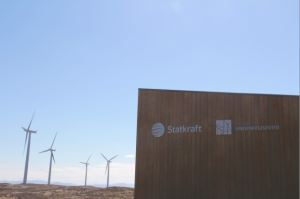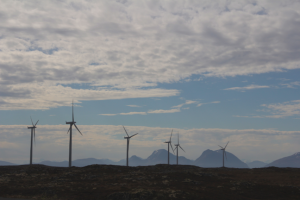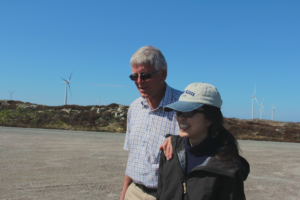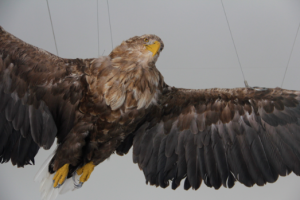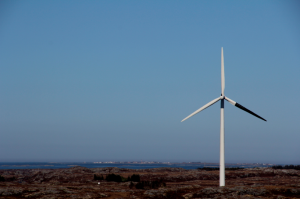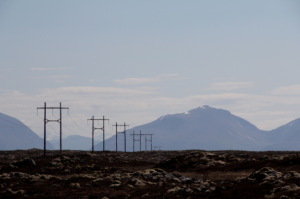After riding a plane, a ferry, and three buses, the group made it from Oslo to our second Norwegian destination: the large but lightly populated coastal island of Smøla. We stayed overnight in a beautiful apartment north of the island and were all immediately captivated by the scenery: the cold waters, perpetual light, and giant slugs. We did not make the long trek to Smøla solely for the sunset (one hour before sunrise!) views, though; our real reason was for a visit to the country’s largest wind farm.
The wind farm is owned by Statkraft, the largest renewable energy company in the world based in the Norwegian government. Tor Moholt, the farm’s cofounder, is now running things on his own and is managing both 49 employees and 68 wind turbines. The farm opened in 2002 and each turbine produces up to 2.3MW of power at wind speeds 13m/s and higher (147mph at the wing tip), adding up to an average of 360-380GWh/yr.
Norway has been shown to have great potential for wind power due to its long coastline and southwest winds. Other parts of the world are equally or more suited for wind power generation. Greenland, for example, has the strongest winds in the world, but unfortunately wind farms placed here are not plausible due the island’s small population and therefore large cost of electricity transport. The UK is also currently in development of large wind farms and has immense offshore wind potential, as we learned from the MacKay reading in class this semester. China is currently the world’s leading wind power generator, but politics surrounding turbine designs and farm placement keep the country’s secrets under wraps. Similar politics exist in Norway, where few subsidies are available for wind farms to be built by German engineers, so in response the Germans have turned to the less windy but more subsidized Sweden for turbine placement.
Another problem for wind farms are environmental concerns. While many residential neighbors to farms complain about noise produced by the turbines, our group was quick to notice the pure quiet across Smøla, where over 80% of residents have reported positive thoughts on the wind farm since its construction. What is more worrying for Smøla are bird deaths from turbines, particularly for the local and famous white-tailed eagles. The first dead eagle was found on the island in 2003 and launched a research program known as Bird-Wind that has been using radar equipment to detect bird movements and local hunting dogs to find any fallen birds. What have these researchers found? As Tor informed us, they concluded that birds are in fact dying from wind turbines! On average, about 7 eagles have been killed by the farm per year, along with many willow ptarmigans and other species. The birds have learned little since the farm’s opening, though their density has decreased some since 2009; they still fly at the height of the turbine wings 24% of the time. Experiments have begun to paint the turbine wings with black tips and/or ultraviolet color to see whether or not the birds will be able to see these better than the current white.
.
What is important to remember before getting too caught up on these bird deaths and rushing to protest wind turbines goes back to MacKay’s chapter on wind from class. More birds are killed from domestic cats, their natural predators, than from wind turbines. Even more importantly, fewer birds are killed from a renewable energy that is barely contributing any carbon emissions (with the exception of construction costs and maintenance) than cars, oil spills, and pollution. On the island of Smøla, more white-tailed eagles are electrocuted from power cables than from the wind farm. So yes, Smøla is a beautiful place and its wildlife should be protected, but I would argue that, from a big picture-perspective, the wind farm is doing just that.


